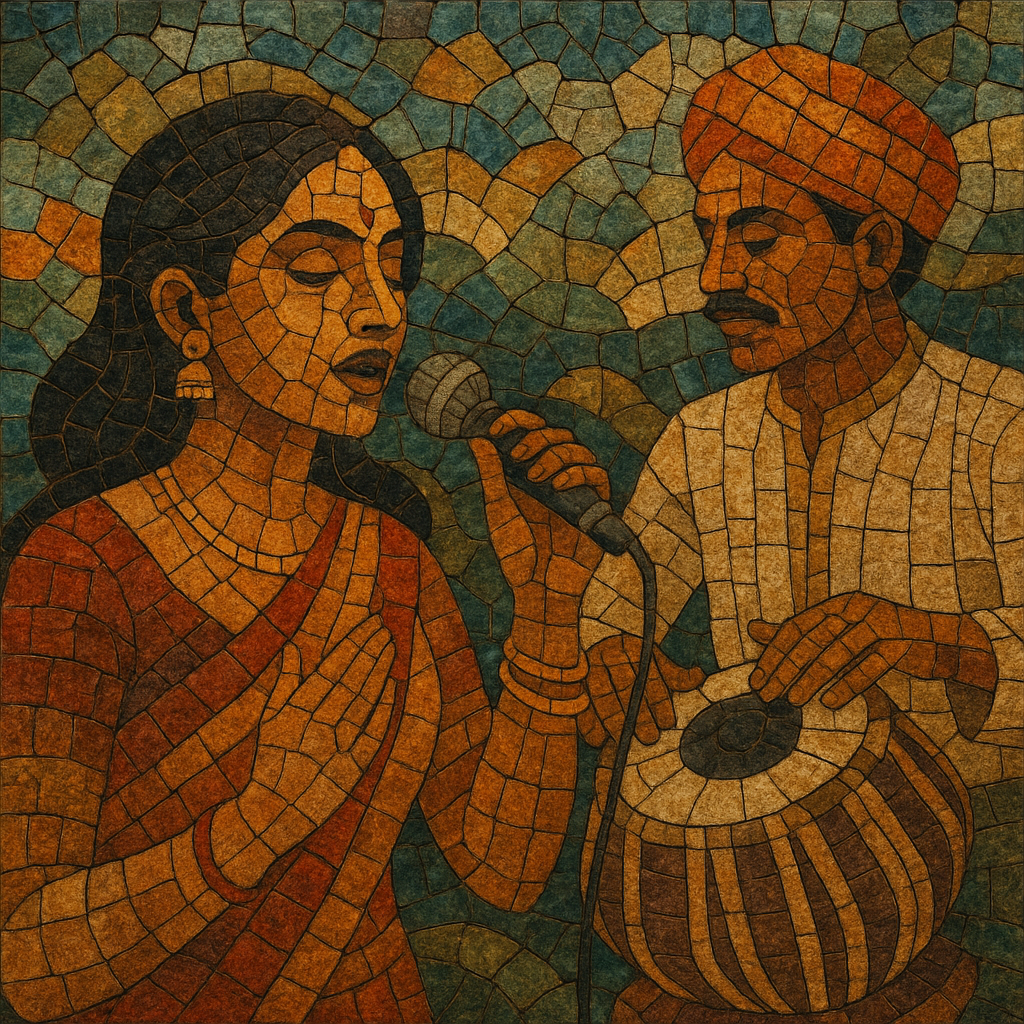Sandalwood refers to Kannada‑language film music from the Karnataka film industry in India. It is a cinematic song tradition that blends Carnatic and Hindustani classical melody with Karnataka’s folk idioms, while freely adopting Western pop, disco, rock, and contemporary electronic production.
Songs are typically written in Kannada and feature poetic, image‑rich lyrics delivered by renowned playback singers. Musical materials often draw on raga‑based melody and Indian tala cycles but are arranged in verse–chorus formats suitable for the screen, ranging from romantic ballads and devotional pieces to high‑energy dance numbers and heroic “mass” anthems.
Over time, Sandalwood has evolved from orchestra‑led studio recordings to digital, genre‑fluid productions that still keep melody and lyricism at the core, making it one of India’s most distinctive regional film‑music traditions.
The advent of talkies in Kannada cinema in the 1930s (notably Sati Sulochana in 1934) established the need for songs that could advance plot and deepen character. Early scores leaned on live orchestras and drew heavily from Carnatic and Hindustani classical traditions, as well as Karnataka’s folk styles, setting the template for raga‑tinged melodies with cinematic structures.
The 1970s–80s are widely seen as a golden period. Composer duos and maestros such as Rajan–Nagendra and Upendra Kumar popularized lush orchestration and tuneful romantic numbers, while iconic playback voices (S. P. Balasubrahmanyam, S. Janaki, and actor‑singer Dr. Rajkumar) became synonymous with the Sandalwood sound. Arrangements embraced string sections, woodwinds, and early synthesizers, balancing classical ragas with accessible hooks.
Hamsalekha catalyzed a modern turn by blending Kannada folk grooves, Hindustani/Carnatic motifs, and Western pop, rock, and disco, with colloquial, memorable lyrics. Digital workstations and sampling entered mainstream production. Composers such as Gurukiran expanded club‑friendly sonics, aligning Sandalwood with broader Indian film‑pop trends.
With streaming and social media, composers like V. Harikrishna, Arjun Janya, and B. Ajaneesh Loknath brought crisp sound design, hybrid orchestration, and folk‑centric atmospheres to global audiences. Big‑budget releases and viral singles amplified Sandalwood’s profile beyond Karnataka, while the genre retained its core identity: melody‑forward, lyrically expressive songs crafted for cinematic storytelling.


